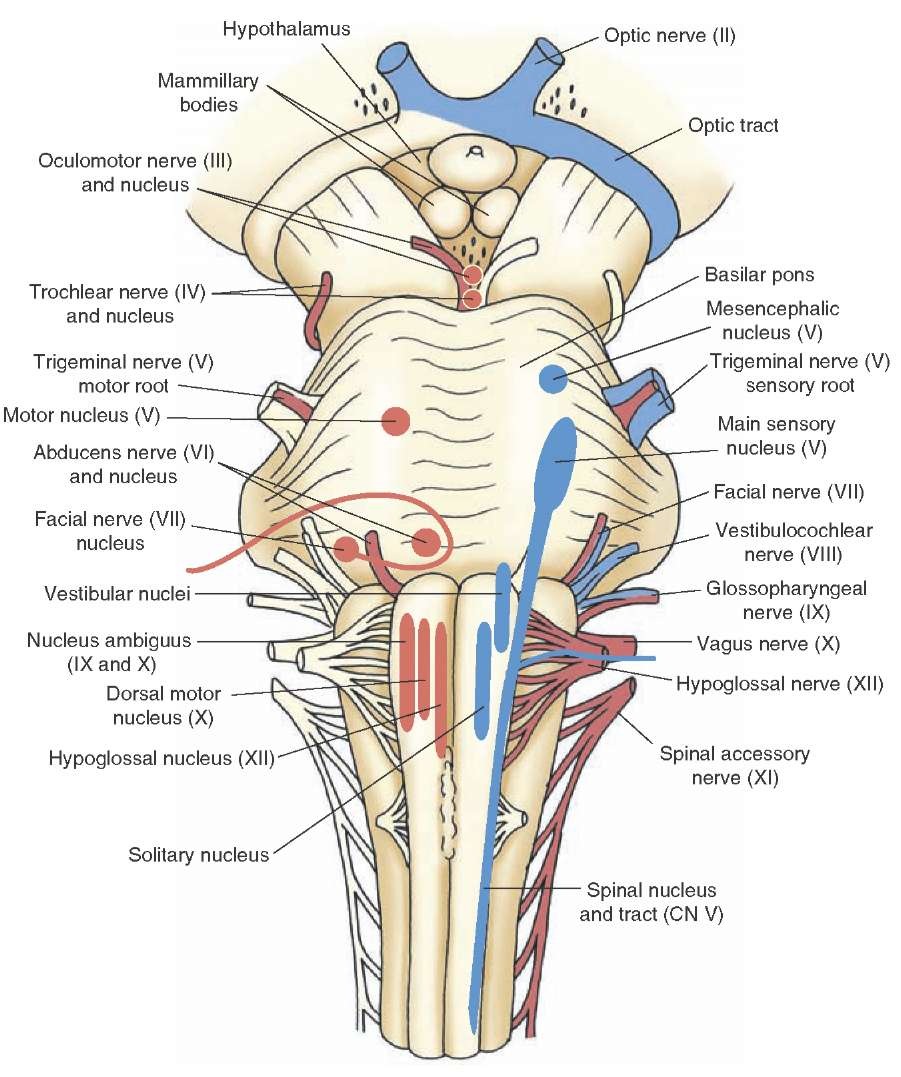What is the pons?
Posted on
8:24 PM
by
Team Albanians
The pons is an area in the hindbrain, above the medulla and below the midbrain.
(You can also add a reaction to the information by clicking below funny, interesting, or cool)
- Known as a message station between the different areas of the brain. It helps relay messages from the cortex and the cerebellum.
- Without the pons, the brain can not function since it is important in transmitting messages or to pass them along.
(You can also add a reaction to the information by clicking below funny, interesting, or cool)
History of the Pons
Posted on
8:18 PM
by
Team Albanians
- In Latin, pons means bridge.
- Also known as pons Varolii, which means Varolii’s bridge. Costanzo Varolio was an Italian anatomist in the years 1543-1575. Varolio is known for studying nerves and structures like the ventricles, cerebellum, and the pons.
- He described the pons for the first time as a communication bridge between spinal cord and the brain.
Structure of the Pons
Posted on
8:18 PM
by
Team Albanians
- The pons is about 2.5 cm long or 1 inch.
- It consists of nerve fibers that connect the cerebrum and the cerebellum.
- The posterior surface of the pons forms part of the wall of the fourth ventricle.
- The blood to the pons is supplied by pontine arteries.
There are two main components:
- Ventral basal pons - It consists nerve fiber tracts, and it is the base of the pons
- Dorsal pontine tegmentum pons - It is against the fourth ventricle and it contains the origin for four cranial nerves, the reticular activating system, nerve tracts and other nuclei.
There are also two respiratory centers located on the pons which will be on the next page.
Respiration
Posted on
8:23 PM
by
Team Albanians
There are two main centers in the pons responsible for the control of respiration. The pons plays a role in establishing respiratory rhythm:
- The Pneumotaxic center: upper pons - It regulates the amount of air a person can take into the body in each breath
- The Apneustic center: lower pons - Acts as a stimulus to promote inspiration by stimulation of the neurons in the medulla.
Function
Posted on
8:23 PM
by
Team Albanians
- Since it is connected to the cerebellum (balance and coordination), the pons is important in maintaining posture.
- Sleeping and Dreaming. Controls when you sleep and when you wake up. Also plays a role in generating dreams.
- Relaying sensory information between the cerebrum and cerebellum
- Arousal
- Controlling automatic functions
- Controlling Respiratory rhythm through the two respiratory centers (this is done with the help of the brain stem, medulla, and other parts of the body).
Click here to go to the next page!
Nerves
Posted on
8:24 PM
by
Team Albanians
Several cranial nerves originate in the pons.
- Trigeminal nerve - Responsible for feeling in the face, and controlling the muscles that are related to chewing, biting and swallowing.
- Abducens nerve - Ability of the eyes to look from side to side
- Facial nerve - Responsible for the control of facial expressions
- Vestibularcochlear nerve - Ability of sound to move from the ear to the brain
Click here to go to the next page!
What if the pons did not function properly?
Posted on
8:26 PM
by
Team Albanians
The following disease is related with the pons:
Central pontine myelinolysis- a disease that causes difficulty with keeping balance, walking, the sense of touch, swallowing and speaking.
- Treatment is available to help with the symptoms.
- If undiagnosed it can lead to death, or locked in syndrome (inability to move your body, other than blink eyes).
- This disease is a brain cell dysfunction because of the destruction of myelin sheath (a layer that covers nerve cells in the pons). It doesn’t allow for signals to be transmitted properly.
Click here to go to the next page!
Fun Facts
Posted on
8:27 PM
by
Team Albanians
- The pons is responsible for the feeling of “falling” that someone has during sleep.
- The pons has a shape of an olive.
- The pons is a very important part of the brain's pathways.
Since we're talking about the brain here are some other interesting fun facts about the brain:
- The weight of the human brain is about 3 lbs.
- The cerebrum is the largest part of the brain and makes up 85% of the brain’s weight.
- Your skin weighs twice as much as your brain.
- The brain’s gray matter is made up of neurons, which gather and transmit signals.
- The white matter is made up of dendrites and axons, which create the network by which neurons send their signals.
Subscribe to:
Comments
(
Atom
)







